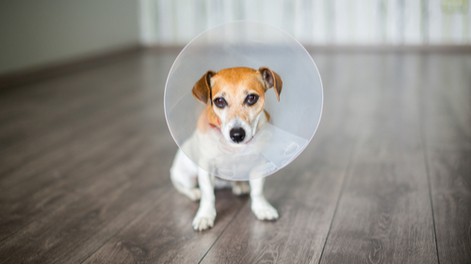These tricks stop post-spay zoomies:
- Stay with your pooch and keep them away from other pets
- Limit their available space
- Toilet breaks should be done on a short leash
- Chew toys, training games, and hidden treats keep them occupied
- Add in short walks when your vet says you can
Our dog, Freya, was spayed when she was younger, so I have personal experience of what it was like to be with her in the days and weeks following the surgery. I’ve also researched the topic, coming up with lots of advice and facts that will make it easier for you to go through this experience with your dog.
Spaying qualifies as major abdominal surgery. If you had similar surgery, you’d know not to run around afterward. Personal experience has told me that’s the last thing I would want to do. Dogs on the other hand… they’re not as easy to tell, are they?
Spaying is the process of removing your pooch’s uterus and ovaries, so she can no longer become pregnant. Your dog will sleep right through it, but you then have the challenge of keeping them calm and looking after them once the surgery is over and they return home.
And if your mutt loves the zoomies, well… you should be prepared in case they want to do it to celebrate getting home. Or they are feeling better the day after. Or maybe they want to do it just for the sake of it.
Keep reading if your pooch is going to be spayed soon, and you want to know how to prevent the dog zoomies from occurring.
Always Follow Your Vet’s Instructions
You should be able to take your pooch home a few hours after she has had the spay. Your vet should provide you with guidance on:
- What to expect
- What your dog should and shouldn’t do
- How to keep them calm
- Food and drink (their appetite may be off to start with)
- Walking
They should also provide that fantastic cone, the Cone of Shame… and may already have fitted it for you before you pick up your dog. The cone is to prevent your pooch from licking her stitches and causing issues and possible infection.
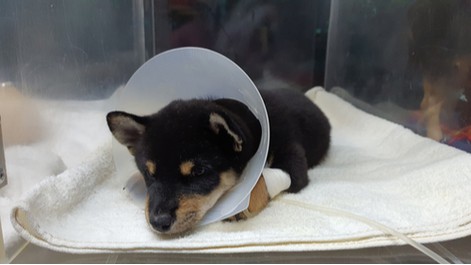
Some veterinarians provide owners with a factsheet. Others simply give verbal advice. If you get the latter, don’t be afraid to call the vet with any questions after you get home. If you’ve never gone through this with a dog before, you may feel overwhelmed to start with.
That’s fine. Just be sure to ask if you’re unsure of anything. It’s all part of being a responsible dog owner.
The Zoomies Could Happen When You Get Home
It’s hard to say what might happen. My dog Freya was quiet and dozy and just wanted to sleep. She perked up a bit the next day, but there was no sign of any zoomies occurring.
Conversely, during my research, I’ve read many stories of owners whose pets got home and promptly zoomed around the house. They were clearly happy to be home, but the zoomies are not recommended at this early stage – barely hours after the surgery has taken place.
So, keep your dog on a leash when you walk them indoors.
Don’t let them off immediately as you normally would if you were returning from a walk.
It’s impossible to tell which pooch is going to celebrate after getting home and which one is going to head for their bed to have a snooze.
Always assume your dog is going to celebrate, so you can be ready to stop them going zoomies.
Never Leave Your Dog Unattended
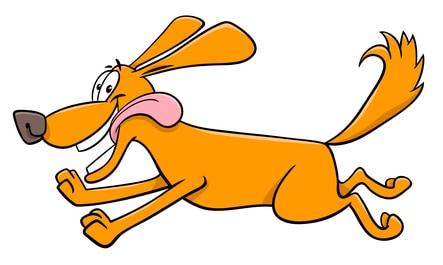
This is vital. Setbacks are rare after spaying, but they can happen – and they’re more likely to occur if your dog is left alone to get up to mischief.
They don’t know they shouldn’t do certain things, so you must make sure you keep an eye on them.
If that means taking time off work for a bit to watch them – at least until you’ve seen the vet for your follow-up appointment – then arrange for this to happen in advance.
Another option might be for someone else in the household to watch the dog when you’re not there. If that’s the case, make sure everyone knows what they should and shouldn’t do.
Create a Plan to Make Sure You Are Prepared
Don’t give your dog any room to zoom – that’s the aim!
Think about the layout of your home and restrict your dog to one room if you can. You might need a dog gate to block the entrance to that room if you don’t have a door you can shut.
Choose a small room and one your dog feels comfortable in. If that’s not possible, think about a pen or a large crate to keep them in. It’s best not to leave them unattended, but if you need to go to the bathroom, you need to be sure they’re safe during those few moments.
This safe space should also be somewhere that is at ground level. Freya has a nice squishy bed she loves, one that snuggles against her and makes her feel safe, so my better half and I made sure she had access to this. She could get in and out of it easily without help.

Freya does indulge in the zoomies, but she was good when she was spayed. We never had any issues with her wanting to zoom around until long after the stitches had gone, and you could barely see the scar. It’s surprising how quickly they recover.
I had the human version of the op, and I was honestly envious of how quickly she bounced back.
That said, some dogs naturally go zooming around far more than others. If you know your dog tends to do this, there is a greater chance they’ll try and do it after being spayed, too.
It’s best to assume they will, and if they don’t, it’ll be a nice surprise.
Keep Your Dog Away from Other Pets
Freya is the only pet in our home, so this wasn’t an issue. However, if you have one or more other pets, it’s more likely your pooch could become excited to see them again.
It might feel cruel to separate them, but it’s for the best and only for a short time. It’ll reduce the odds that you’ll get any zoomies to worry about.
Make Sure You Have Some Toys and Challenges Ready
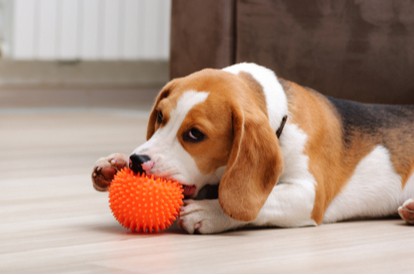
Freya was sleepy on day one, better the next day, and then started moving around more. However, I have read some horror stories about dogs that got back into the zoomies from the second they got home.
Since you won’t be able to return to your normal routine of walking and activities for a few days, at least, it’s best to make sure you have some items at hand to keep your dog occupied.
She won’t want to do too much, but she’ll get bored if you don’t give her anything alternative to do. Here are some ideas:
- Kong toys – some of these are designed to be stuffed with peanut butter or other dog-friendly goodies to keep them occupied
- A favorite toy to chew – there is plenty to choose from; antlers shed from deer are a popular treat for Freya
- Hiding games – here’s a favorite; I washed three yogurt pots and grabbed a handful of training treats. I showed Freya one treat, then hid it underneath one of the pots. I moved them around and let her find the one with the treat underneath it.
No doubt you’ll think of some other ideas, but anything interactive that doesn’t involve a lot of moving around should be fine.
Toilet Breaks Should Be Taken on a Short Leash

If you have a yard, stick to using it for toilet breaks for the first few days. Your vet should give you the thumbs up when it’s okay to take your dog for a walk.
You should always take your dog out into the garden on a short leash, though. You may find they are quiet and relaxed indoors, but when they get a scent of the outdoors… the zoomies could begin when you least expect them.
Stick to that short leash and give them plenty of time to go while you’re outside.
If your pooch tends to go to the back door or gives you some other signal they want to go, have the leash ready.
I hung Freya’s leash on a hook by the back door when she had been spayed, so it was already there, and I didn’t need to look for it.
Make Sure You Attend Your Follow-Up Veterinary Appointment
This usually happens a few days after the surgery takes place. You’ll probably book it when you collect your dog after the op. We visited our vet about a week after they completed the operation.
It’s an important visit because the vet can check how your pooch is doing. They’ll look at the incision and make sure it’s healing properly. If the stitches need removing, they might do it at this appointment.
Freya had dissolving stitches, so we didn’t need to worry about this. She healed well and was given the all-clear to start taking short walks after this appointment.
Top tip: If you have any concerns at any stage, speak to your vet. If you’ve had pets spayed before, you might be an old hand at this. However, if this is your first time, you’ll likely want reassurance.
Return to Short Walks When Your Vet Says You Can Do So
Your dog won’t be ready to resume their usual longer walks to start with. When your vet gives you the okay, get started with a short walk at the normal time.
I always take Freya out first thing in the morning, so I went out around the block with her. The usual five-minute walk took two or three times as long because it tired her out. I stuck with that for a few days before gradually lengthening it.
Take your cue from your dog, though. Make sure you don’t overtire her.
Consider Buying a Soft Cone for Them to Wear
The vet gave us the usual plastic see-through cone when Freya had her surgery. They don’t look comfortable though, and Freya was a real fidget when she wore hers.
So, we looked online and discovered you can buy a soft version. They’re not transparent, but they are comfy and you can fold them back to allow your pooch to eat without removing the cone.
Freya also found it far comfier to sleep in than the plastic alternative. And once you’ve got one, you can keep it in case you need your dog to wear one in future. We’ve never regretted that purchase.
Bottom Line: Assume Your Pooch Will Attempt the Zoomies
It’s way better to do this and find they don’t bother zooming around than to assume they won’t and be faced with an excited dog with a serious post-op case of the zoomies.
Immobilizing your dog after surgery isn’t easy, but it’s probably not as difficult as you think either. You know what to do now, so all that remains is to prepare for what comes next. Good luck!
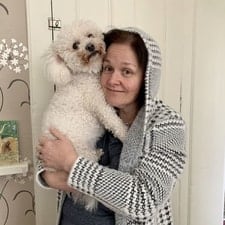
Sources:
https://www.akc.org/expert-advice/health/spaying-and-neutering-your-dog-faqs/
https://www.familyeducation.com/life/spaying-neutering/spaying-neutering-your-dog
https://positively.com/contributors/how-to-keep-your-dog-calm-after-surgery/
https://thelabradorforum.com/threads/keeping-puppy-calm-after-her-spay.19394/
https://www.disboards.com/threads/dog-going-nuts-after-spay.2738370/
https://www.goldenretrieverforum.com/threads/spay-limit-activity-are-you-kidding-me.74918/
https://www.reddit.com/r/dogs/comments/1g6ma6/is_it_ok_that_shes_running_after_being_spayed/
https://www.dogforums.com/threads/getting-a-dog-spayed-tell-me-about-recovery.216194/
https://boards.bordercollie.org/topic/36685-when-can-i-walk-her-after-she-is-spay/
https://www.wikihow.com/Keep-Your-Dog-Calm-After-Neutering
https://sheltieforums.com/threads/keeping-puppy-quiet-after-spay.19434/
https://www.dobermantalk.com/doberman-health/2503-activity-after-spay.html

